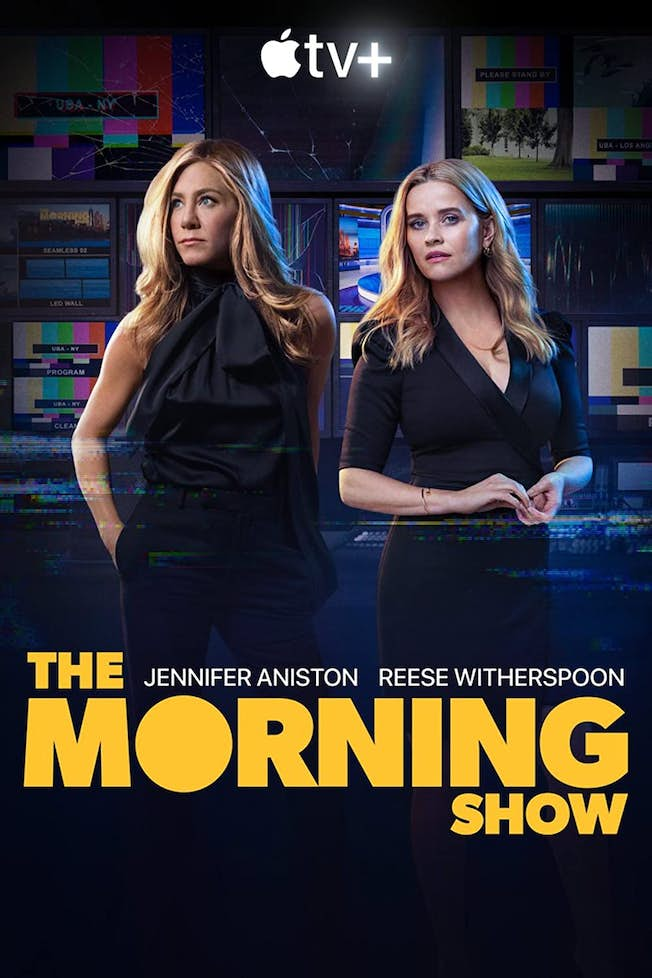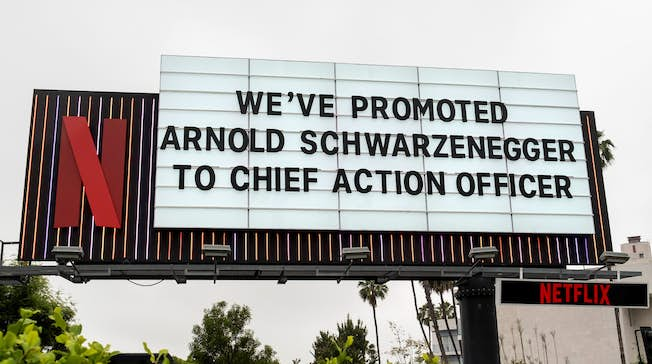Despite powerful competitors snapping at its heels, Netflix is a force to be reckoned with in the streaming and entertainment world.
The subscription-based streaming service has over 23 million subscribers and reported a revenue of over $8 billion in the first quarter of 2023 according to Statista. Those are some eye-opening numbers to contend with and the brand shows no intention of slowing down.
You just need to look at its content over the years to see its rising success: Bridgerton, Stranger Things, Downton Abbey, The Crown, Tiger King, Squid Game and Money Heist.
Let’s look at how its marketing strategy has changed over the years and where it stands in the face of powerful rivals like Disney+, Amazon Prime Video, and Apple TV+.
What makes Netflix so successful?
In essence, Netflix’s success is due to the brand’s ability to evolve and the speed at which it does so. It’s this ability to pivot that has enabled its marketing strategy to change and move away from long-held beliefs such as ‘ad spending not resulting in more viewers’.
Another driving success factor is its technology. Netflix’s recommendation engine was created to do one key thing – drive personalization. Its goal is to ensure that subscribers get the content they want and are interested in. This requires the collection of data and the creation of tailored customer journeys for every user. That’s no small feat.
Another key reason is the content. Netflix invests a huge amount of money in original content. This vision and investment have seen it create hit shows and get nominations and wins for Oscars, Emmys, BAFTAs, SAGs, Golden Globes, and even Grammys.

How does Netflix compare to its rivals?
When it comes to content and brand authority, Netflix is hard to beat. Its cutting-edge content, commitment to spotlighting foreign language content such as the French hit ‘Call My Agent’, and commitment to UX have kept the platform in the driving seat—but some of its rivals are thriving too.
The content on Disney+ is enviable even by Netflix standards. With Pixar (Toy Story), Marvel (Iron Man and the rest!), Lucasfilm (Star Wars) and Hulu (Keeping Up with the Kardashians) content along with its lower membership price point, Disney+ draws in subscribers to the tune of over 234 million (that’s more than Netflix).
However, according to Nasdaq, subscriber count has become a murky metric. Instead average revenue per user (ARPU) can be more telling. In Q4 of 2022, Netflix’s monthly ARPU stood at $11.76, while Disney+’s domestic ARPU was $5.95.
Check out our case study ‘The Enduring Innovation and Magic of Disney’ for an in-depth look at that brand’s full marketing picture.
Apple TV+ is another streaming service gaining ground with an estimated 25 million paid subscribers and 50 million users that get the platform free with the purchase of an Apple device (as of March 2022). ‘The Morning Show’ featuring Jennifer Aniston and Reece Witherspoon proved a huge hit for the platform. However, with only around 80 series, movies, and documentaries, it pales in comparison to Netflix’s library of over 5000 items.

Amazon Prime Video is well placed to capture a share of the streaming market seeing as its parent company Amazon is one of the most recognizable ecommerce brands in the world. The video platform has 190 million subscribers worldwide with successful original content such as Fleabag (a co-production with the BBC) and The Marvelous Mrs. Maisel. However, the platform has been criticized for a lot of its content being user-generated and some of it questionable according to the Wall Street Journal.
Other competitors are YouTube TV, Paramount+, Sling, and HBO Max.
A pivot from the ‘brand’ to the content
Netflix’s marketing budget has remained fairly consistent, increasing to $2.5 billion in 2022 from $2.2 billion in 2020.
However, the way in which Netflix spends money is changing. The marketing strategy has moved from a focus on the brand itself to shining a light on individual titles, according to the New York Times.
Take ‘Wednesday’, a spin-off Addams Family-inspired show featuring Jenna Ortega. Along with advertising in airports and on the Uber app, Netflix shifted money from Twitter and Instagram to TikTok after a scene of Wednesday dancing was copied by others and went viral.
Segmenting subscribers & launching an ad tier
To boost revenue and attract more subscribers, Netflix offers a range of subscription plans, from ‘Basic with Ads’ to ‘Premium’.
The launch of the lower-cost subscription in November 2022 was intended to attract more cost-conscious users after a sharp decline in the first half of the year when the subscriber base fell by 1.2 million amid a rocky global economy and growing competition.
The brand also clamped down on ‘password sharing’ in subscriptions as it wants to limit the number of devices people can use to access their service. It sent letters to subscribers that shared their passwords outside their household as this can now only be allowed by paying for an extra user each month.
“Netflix is balancing new ad revenue coming in with the potential of subscription revenue being lost from existing users downgrading,” says Wedbush Securities media analyst, Michael Pachter to TIME magazine. “But it’s going to take some time for the advertising business to fully monetize.”
The ‘Basic with Ads’ is the cheapest plan at $6.99 a month as it shows advertising and only allows it to be used on one device. In contrast, the ‘Premium’ plan is $19.99 a month with no ads and enables HD, and 4K Ultra HK along with four streams at once.
However, brands have been clamoring to advertise on Netflix for years due to its vast audience base. The new plan reached about 1 million monthly active users in the U.S. after its second month (Jan 2023), according to internal data seen by Bloomberg with many of those being lapsed or new users, accounting for 20 percent of new sign-ups in the country.
While advertisers voiced their frustration with the lack of targeting and measurement on the ad platform initially, Netflix revealed it has chosen Nielsen’s DAR for audience measurement, DoubleVerify and Integral Ad Science for ad verification and outcomes-based measurement provider EDO.
The company also unveiled sponsorship opportunities to buy pre-roll spots for specific shows and shared plans to run campaigns tied to holidays so buyers can target audiences when they’re most engaged.
Turning Promotion into Creating a Buzz
When it comes to promotion, Netflix isn’t afraid to be bold. The success of their marketing is down to their ability to think outside the box and tap into what their audience is interested in.
Take ‘The Marquee’, high-tech billboards with humorous messages that relate to Netflix content and resonate with the public. The messages are changed every week and are in high-traffic locations such as Sunset Boulevard in L.A., Times Square in New York, and the Trevi Fountain in Rome.
One billboard was used to promote Arnold Schwarzenegger’s new show ‘Fubar’ on Netflix.

“The point of the board is to have fun, be edgy, and push all the way to the edge,” Marian Lee Dicus, CMO of Netflix said. “I know it’s a lot of pressure because they have to come up with a new message every week, but if they’re just using it for something lame, I’d rather not do it.”
Another example is the guerilla-style campaign the streaming giant ran on the back of the success of their show ‘Squid Game’. In one of the show’s episodes ‘Green Light, Red Light’ a giant doll appeared that resonated with audiences.
Netflix used it to promote the show and create a buzz by placing installations of the doll in Australia, the Philippines, the USA, Korea, and England. People were also invited to play games to win prizes and share pictures of the installation on social media to receive a “Squid Game”-themed gift.

The result? ‘Squid Game’ helped Netflix gain 4.38 million subscribers according to Valens Research and went viral across social media. The hashtag #squidgame has reached 82 billion views on TikTok.
Customer data & personalization
When it comes to data, Netflix knows what it’s doing. The streaming service collects a huge amount of data every day – and unlike many brands – puts every piece of information to use; to create a better customer journey, to create a content library that feels personal to a user.
What’s important is how they analyze and measure their data. Netflix appears to constantly learn from the information it gets and changes to drive better performance and make its content work harder.
For example, before 2019, Netflix counted 70 percent completion of an episode or movie as a ‘view’, its main engagement metric. At the end of 2019, it changed a ‘view’ to ‘any watch time’ of two minutes or longer. In 2021, the metric changed again, moving away from the ‘number of views’ to ‘minutes watched’ as reported in Entrepreneur.
Credited with introducing ‘binge watching’, Netflix uses clever tactics to keep subscribers on the service. They use auto-play so a new episode starts automatically without any clicking or action on the user’s part. If a series or movie is finished, similar recommendations are offered to push people to watch something else.
In 2021 Netflix launched a ‘Top 10 on Netflix’ website, a place to showcase its most popular content broken down into global and country-specific lists. The metric used for these lists is ‘engagement as measured by hours viewed’ as the company believes it’s “a strong indicator of a title’s popularity, as well as overall member satisfaction”.
Netflix: Wrap-up
There’s no doubt that streaming is popular, but it’s also a very competitive space. While Netflix currently has the edge, the brand knows it needs to keep innovating to keep that coveted position.
Let’s recap the key reasons Netflix is such a successful brand. It:
- Uses data to understand customers and inform content creation
- Taps into trends and social media conversations
- Is not afraid to use humor in its messaging
- When a show becomes a hit, the brand capitalizes on it
- Encourages customer engagement
- Listens to feedback and works on solutions
- Combines traditional and digital marketing tactics in interesting ways
- Sets metrics and constantly tracks performance
There’s little doubt that Netflix will keep growing and evolving based on internal and external factors. The crucial factor in its success is that it wants to keep getting better and is prepared to do the work to get there.
